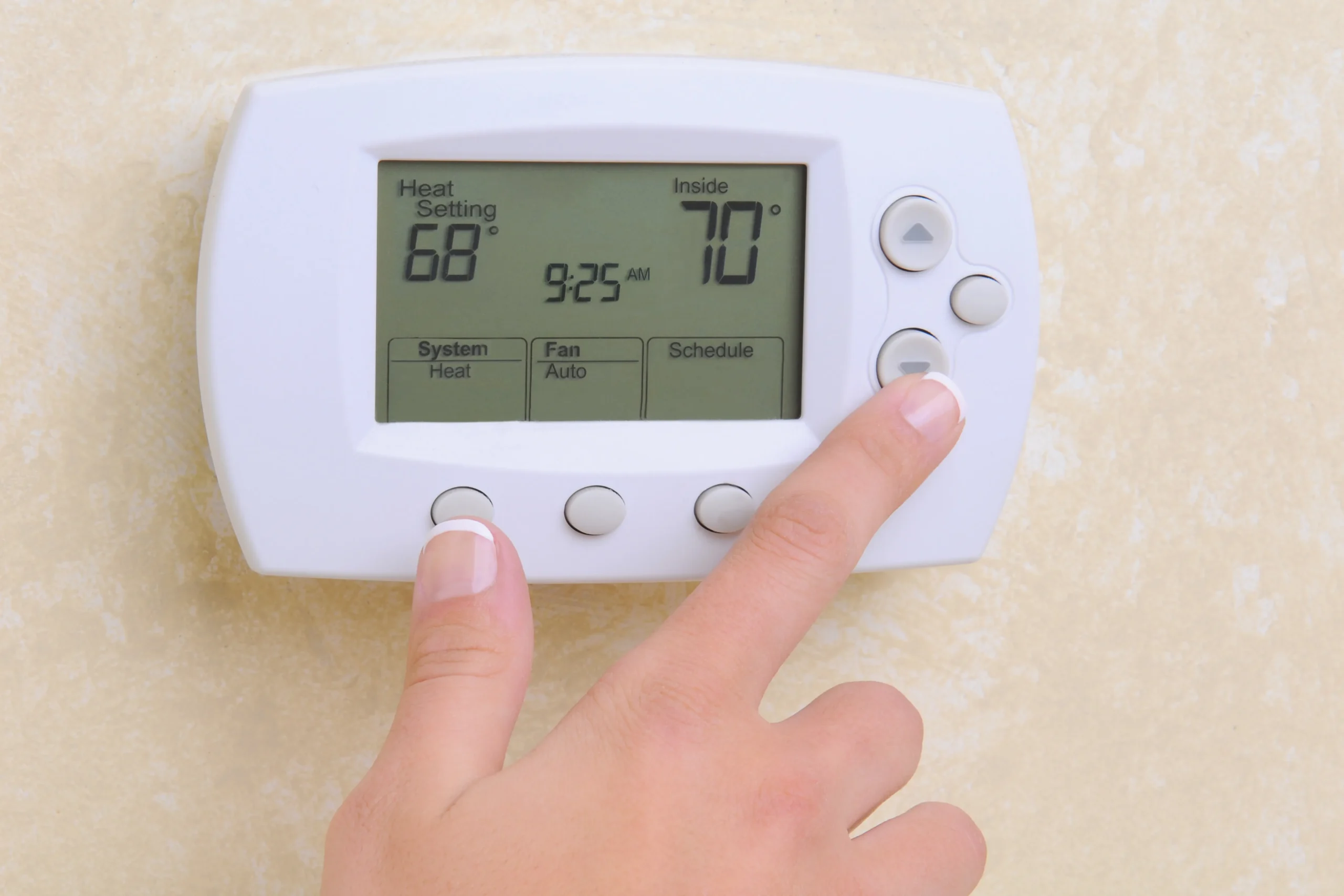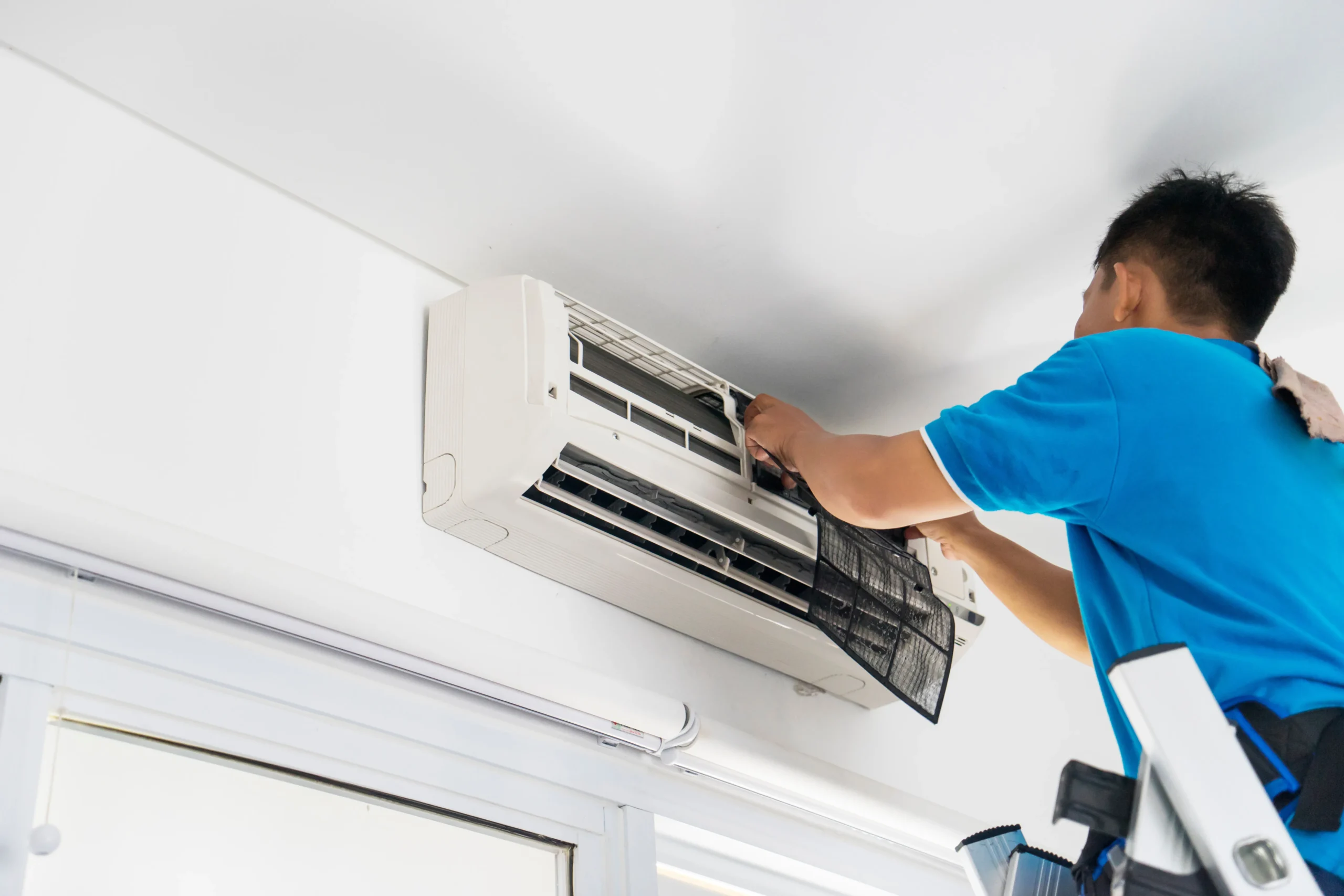As the summer heat intensifies, your AC unit becomes a lifeline, providing much-needed relief from the sweltering temperatures. However, if you’re dealing with your AC not working, we’ve got you covered with this troubleshooting guide for your AC unit.
Before you call in the professionals, let’s walk through some common issues and easy fixes that might get your cooling system back on track. Whether a simple adjustment or a quick check, let’s dive in and get your home feeling comfortable again in no time.
A Troubleshooting Guide For Your AC Unit
Is Your Thermostat Ready?
The thermostat is the central command center of your AC unit, and ensuring it’s set correctly is crucial for proper operation. During the summer months, your thermostat should be in the “cool” mode, signaling to the system that you want it to provide cool air throughout your home. When the winter comes, simply switch to heat for heat pump operation.
If your AC is acting up, our troubleshooting guide for your AC unit starts with checking your thermostat settings before diving into more complex steps. Ensure it’s set to the desired temperature and not accidentally switched to the heat mode.
Also, confirm that your outdoor AC unit or heat pump is running when the thermostat calls for cooling. If it’s not, you may need to investigate further.

Is Everything On?
Sometimes, even the simplest solutions can be overlooked, especially in hot, uncomfortable conditions. Remember, lack of power can prevent your system from functioning correctly, leaving you frustrated. No power means no cool air. It’s as simple as that.
Start by checking the circuit breakers that supply power to your AC unit. If a breaker has tripped, reset it and see if the issue is resolved.
Next, locate the outdoor disconnect switch, typically a small gray metal box mounted near the outdoor unit. Make sure this switch is in the “ON” position.
When your thermostat activates, the blower motor in your furnace or air handler should kick into gear. If it doesn’t, double-check that the outdoor disconnect switch is on and properly supplying power to the system.
Could It Be A Blown Fuse?
If your AC isn’t turning on at all, even when everything seems to be getting power, it could be due to an internal issue like a blown fuse or a faulty capacitor. These components help start the motors in your system, and when they fail, your unit won’t run.
Unfortunately, these aren’t safe DIY repairs and should only be handled by an HVAC professional. If you’ve checked everything else and the system still won’t kick on, this might be the next thing to investigate.
Is There Proper Airflow?
One of the most common culprits of a hot room with AC on is restricted airflow due to dirty or clogged air filters. But how exactly can clogged air filters affect your home? Well, a blocked filter can make your home uncomfortable because your AC needs to work harder (not better) and potentially shut down the system due to a lack of proper airflow.
That’s why our last troubleshooting guide for your AC unit is to regularly check and replace your air filters as the manufacturer recommends and make it a habit.
Also, ensure that your air registers (supply or return ducts) are unobstructed by furniture or other objects that could impede airflow throughout your home and plugged in.

Is Your Outdoor Unit Clean?
The problem could be outside your house. Your outdoor condenser can be dirty and not able to do its critical job of cooling. If that’s the case, then you need to clean it, or have someone clean it for you, before you can expect your system to run effectively.
Now, if you’re a DIY type or you’re just curious, here’s what to do. Take a quick look around the unit and clear away any obstructions. Just be sure to turn off power before gently rinsing off any buildup with a hose.
Is Your AC Draining Properly?
If your AC has stopped working entirely, the issue could be a clogged condensate drain line. This line removes the moisture your system pulls from the air, and if it’s blocked, it can cause water to back up and trip a safety switch, which will shut down your unit.
To find out, check around your indoor unit for signs of water or dampness. If you’re comfortable doing so, you can try flushing the drain line with a bit of vinegar. Otherwise, it’s a quick fix for an HVAC tech.
Preventive Maintenance Tips
While this troubleshooting guide for your AC unit can help you resolve immediate issues, the best approach is to prevent problems from occurring in the first place. Regular maintenance is essential for keeping your AC unit operating at peak efficiency and extending its service life. This routine can save you significant energy costs and prevent the need for expensive repairs down the line.
Consider scheduling annual inspections and tune-ups with a professional HVAC technician. During these visits, they will thoroughly clean and evaluate your system, detecting and tackling any prospective issues before they become significant problems.
Additionally, they can perform tasks like cleaning the condenser coils, which can improve efficiency and prolong the life of your AC unit.
End Note
We hope this troubleshooting guide for your AC unit has helped you tackle any cooling woes you might be facing. Remember, if these tips still need to do the trick, feel free to reach out to the experts. Johnson’s HVAC is always here to lend a hand and get your home back to comfortable temperatures in no time.
Contact our team today for all your cooling needs. Whether it’s repairs, maintenance, or a new installation, our team is ready to keep you cool and comfortable all year round.



Recent Comments